Math Muffins in March!
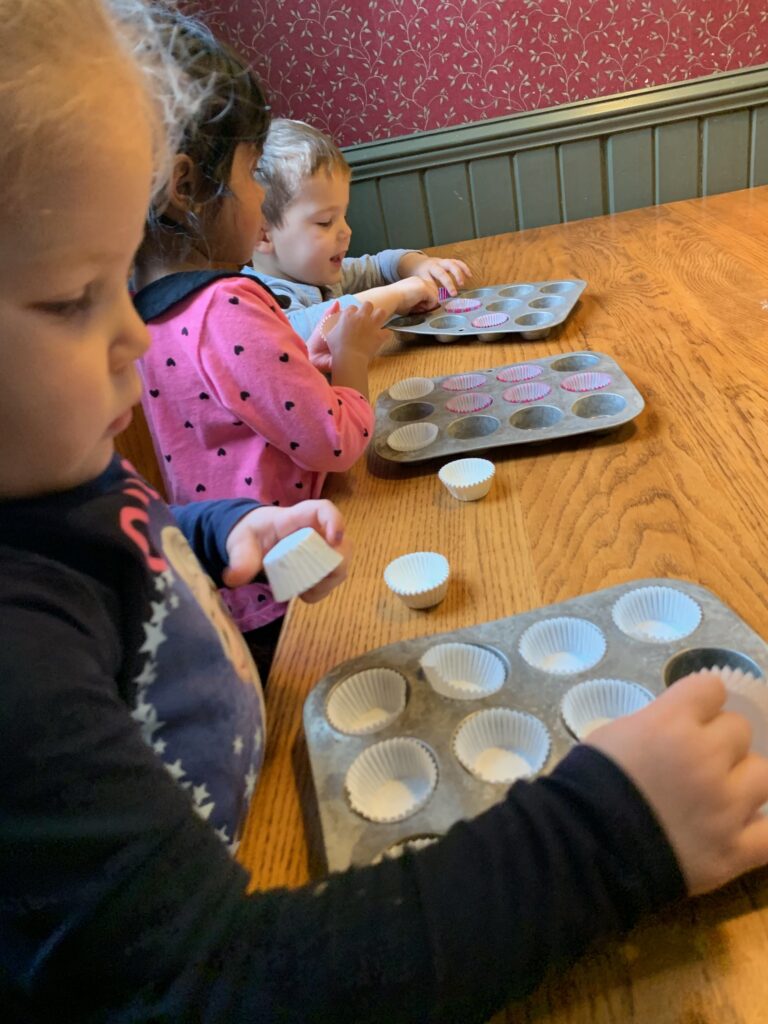
James bounces into our early childhood center on a gloomy March morning and asks, “Can we make muffins today?”
“Yes! Muffins!” the other children shout, jumping up and down in what just moments before had been a calm, quiet and sleepy classroom.
We cook a lot, and over the years I have learned to stretch this activity into a “curriculum” that gives each child plenty of hands-on time with the ingredients.
There is something magical about cooking that levels the playing field and makes the activity developmentally appropriate for children of every age and skill level.
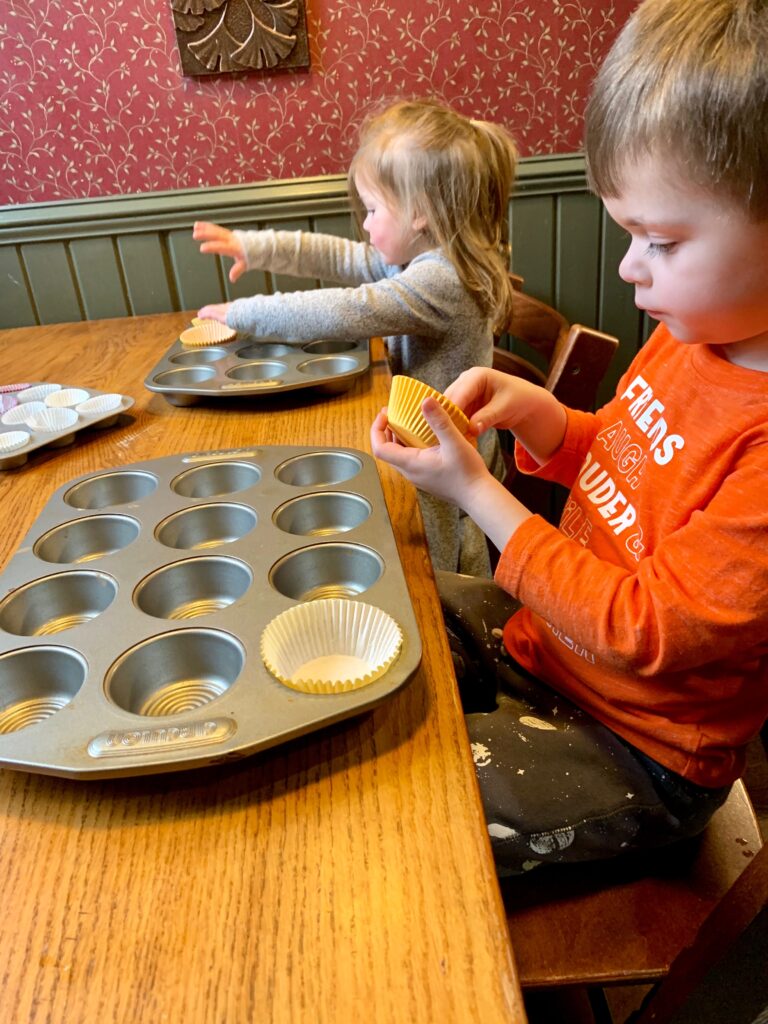
Before calling the preschoolers into our kitchen area, I prefer to prep the workspace. But on days like this—when the cooking is a spontaneous, child-led idea—I send the children to the bathroom to wash their hands and quickly get to work.
In an ideal world, I would gather all of the ingredients and take care of any prep work that might be too difficult for little hands in advance. For example, I might chop an ingredient or pour a teaspoon of vanilla into a measuring cup and then set those items out in the order that we will need them for the recipe.

“Can I crack an egg?” begs Saaliha.
“Me, too!” shouts Marcus. The children are bouncing with energy and joy.
“I don’t like to crack eggs,” says Hudson. “Can I stir the flour and sugar?”
When I have more ingredients than children (or more children than ingredients), I get creative. If I’m working with a younger group, I’ll crack the eggs for the children and put them into measuring cups. You may need to let each child add one egg or one child add three eggs, depending on how many cooks there are and how much time you have in the kitchen.
I try to stretch out this part of the cooking sequence because every child needs a turn, and each turn is a learning opportunity. Cooking is one of those rare times when everyone is working as a team, the children are happy and helpful and the conversations are rich and engaging.
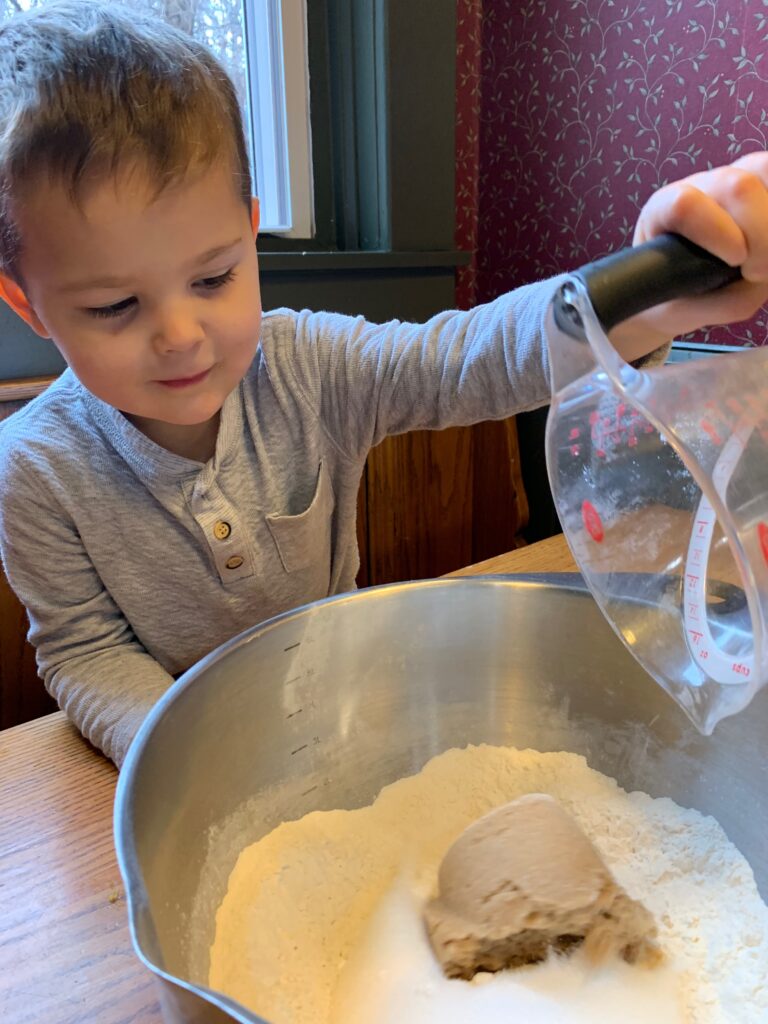
Years ago, we had a visual learner who described pouring the dirt (brown sugar) on top of the snow (flour) and then stirring in the sunshine (eggs). For years, children have repeated that same story over and over to the new children in the classroom. I have no idea how many years this has gone on or how much joy that silly little narrative has brought to the children who have walked through our door!
Count the ingredients. Count the eggs. Count the number of times each child gets to stir the mixture.
Meanwhile, expand the vocabulary of your young chefs. Ask the children to describe what they see, taste and smell. Talk about the colors and the textures.
Then ask the children to predict what will happen to the muffins or cookies when they are placed in the oven. Will they rise? Will they get bigger? Why?
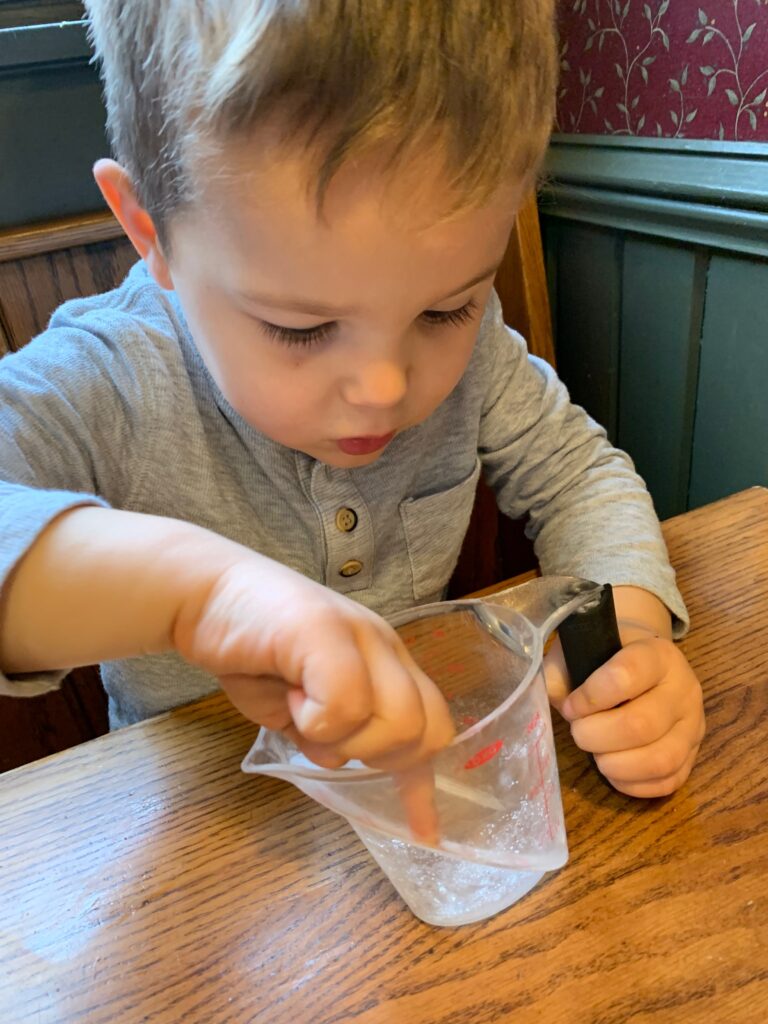
Cooking gives preschoolers a strong foundation in math, science, language, art and reading. When we invite children to create in the kitchen, we provide learning opportunities in many academic subjects.
Think of your ingredients as subsets that will introduce opportunities for counting, observing, predicting, adding, measuring, dividing and estimating.
As children see how certain ingredients combine, react and change during the cooking process, they are learning basic chemistry.
Baking also brings children together at the table to share food, conversation, observations, ideas and camaraderie. What more could you ask for in an early childhood setting?
 \
\
Waiting for muffins to bake can seem like an eternity when you are three. Don’t torture yourself or your students! Pick a recipe with minimal ingredients and shorter baking times. Instead of a 30-minute banana bread recipe, make a smoothie, muffins or cookies.
We use our baking time to take bathroom breaks, sweep the floor, wash the dishes, wash our hands and set the table so that we can feast on our masterpiece as soon as it comes out of the oven and cools. If there’s still time left on the timer, then we wash our hands again!
Remember to keep it light and keep it fun. Sit down and enjoy the conversations and the joy of being with your young learners. Breathe in the tantalizing smell of muffins rising in the oven and give yourself the time and space to engage in these extended activities. Feast on some comfort food and engage in some delicious early science and math learning!
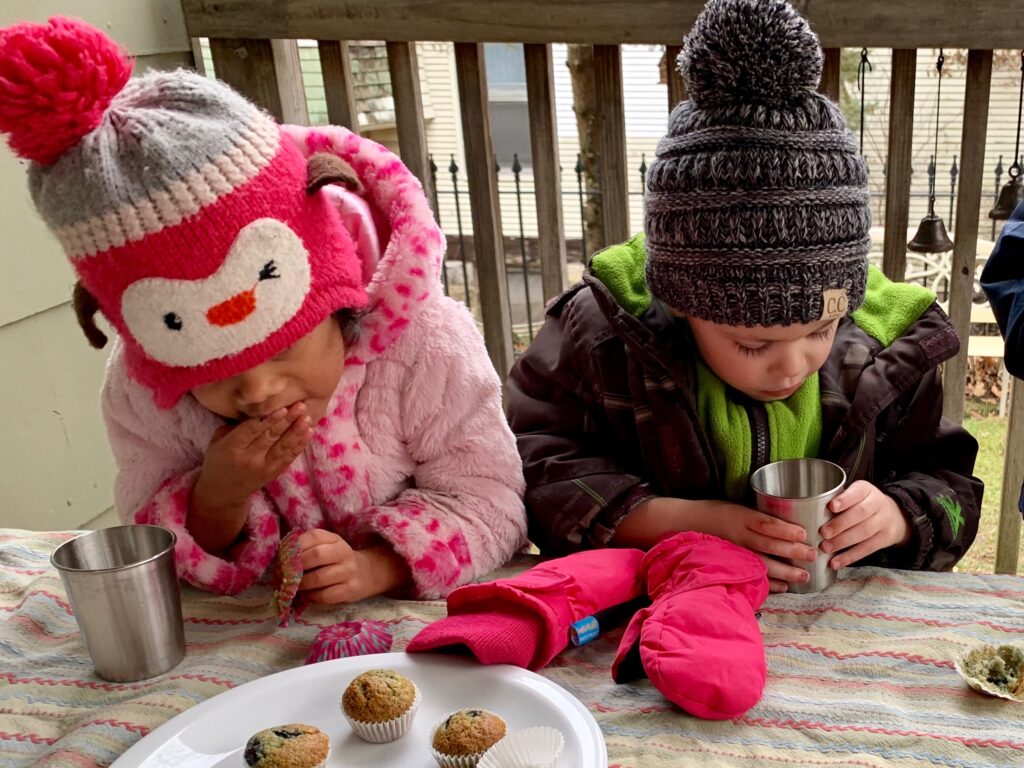
If you’ve got pancake fans in your classroom (and who doesn’t), we’ve got a great lesson plan for you here. Don’t forget to click on the Connect With Families button in the upper left corner of the lesson page to download a letter that gives families all of the information they need to continue the learning at home.
Incorporating activities when learning how to bake enhances productivity.
Learning how to bake enhances productivity.
A beautiful way to improve various areas of development.
Putting math into everyday activities helps kids so much!
So many lessons in this fun activity
I think it’s always an excellent idea to have your kids in the kitchen helping out. It’s definitely a learning experience.
i love the idea of cooking with kids for math learning, something new to try
I know from experience that children love to learn by mixing ingredients and making things.